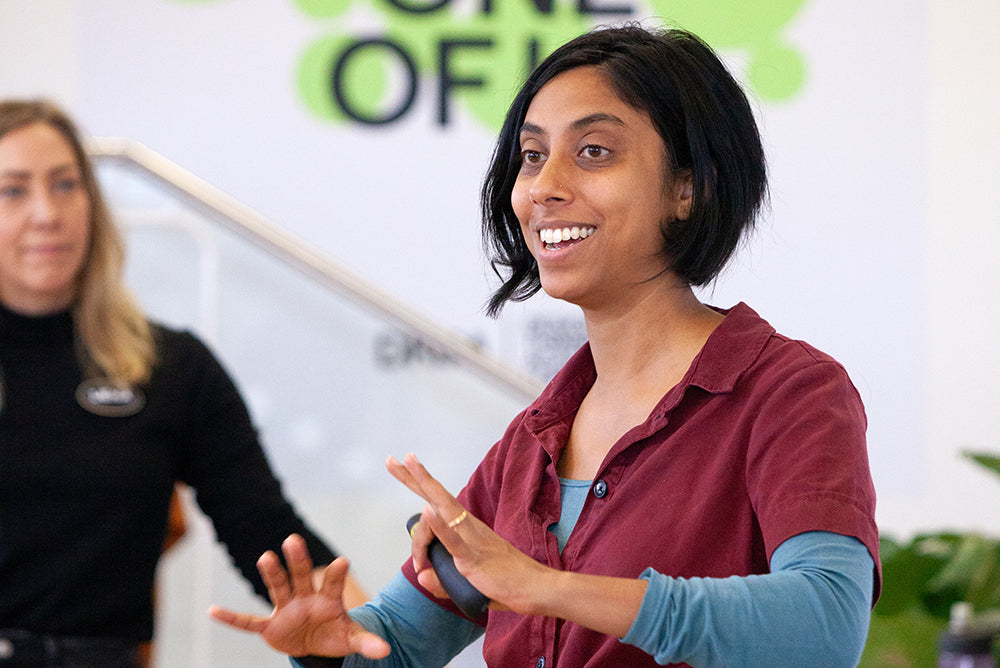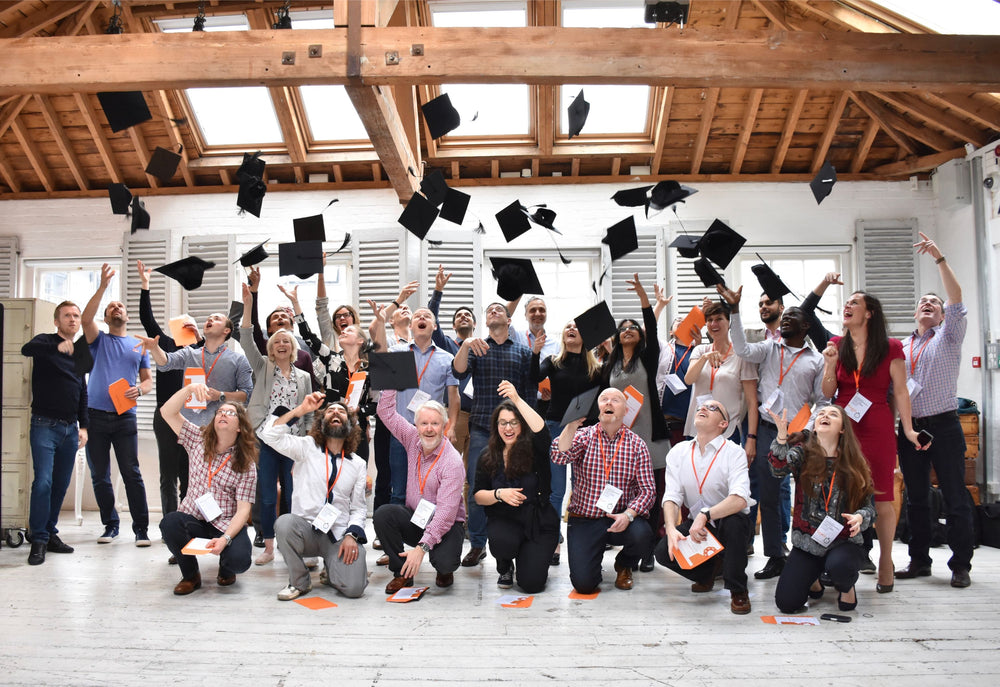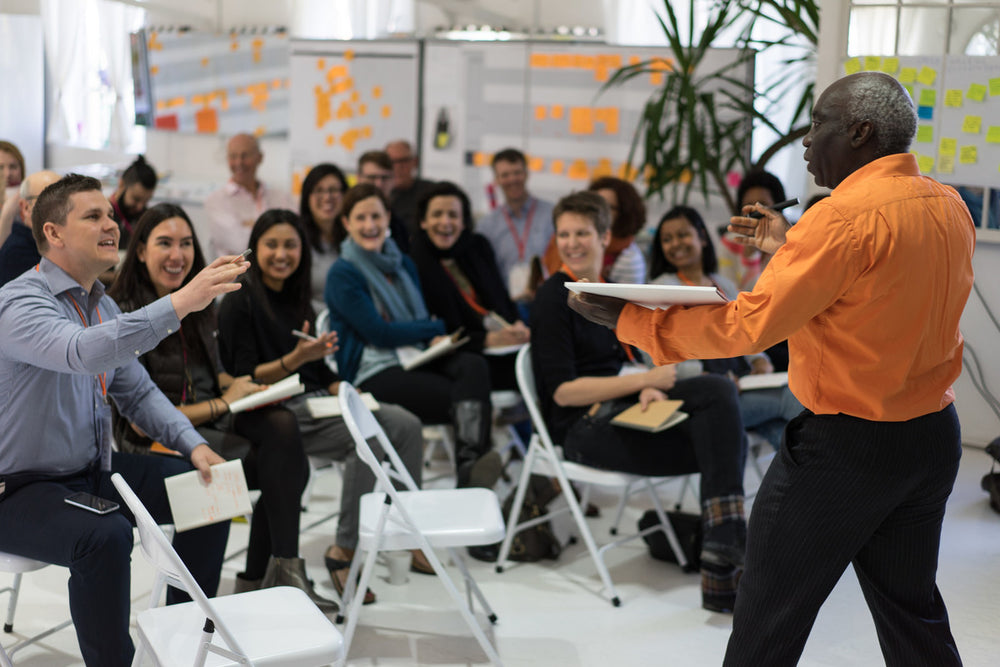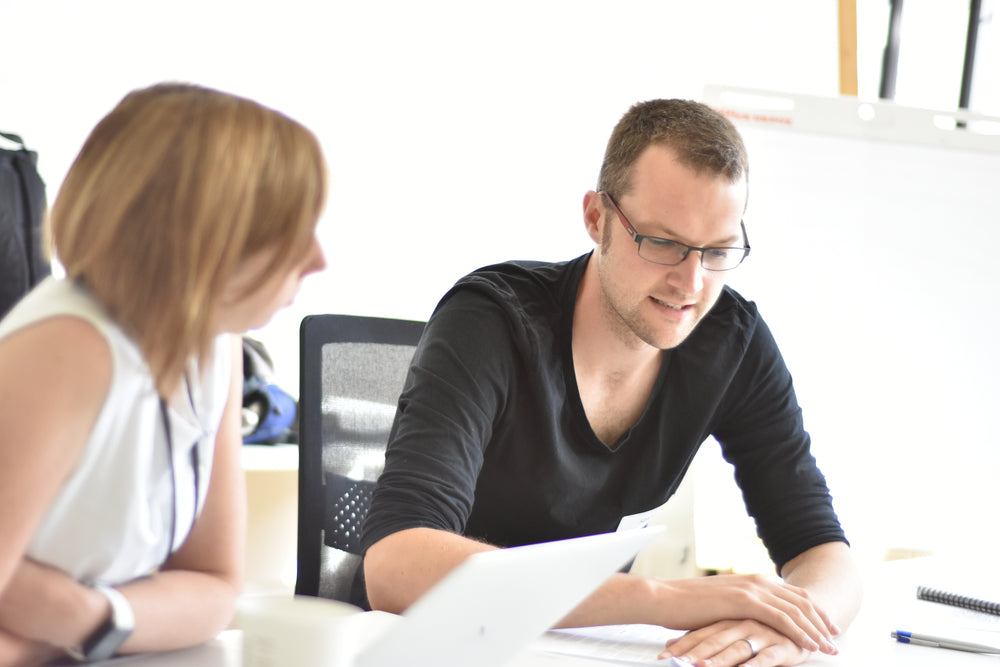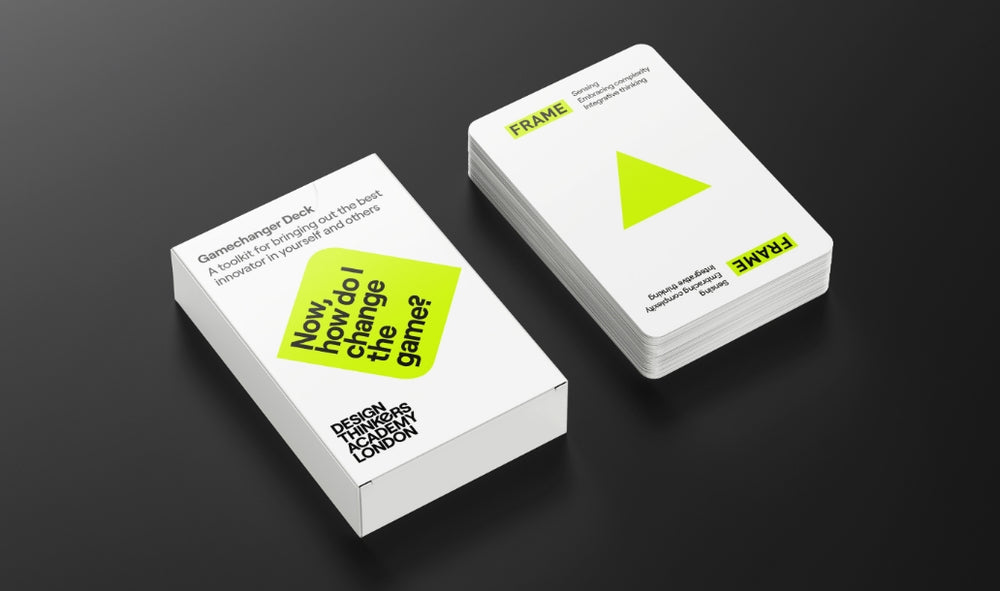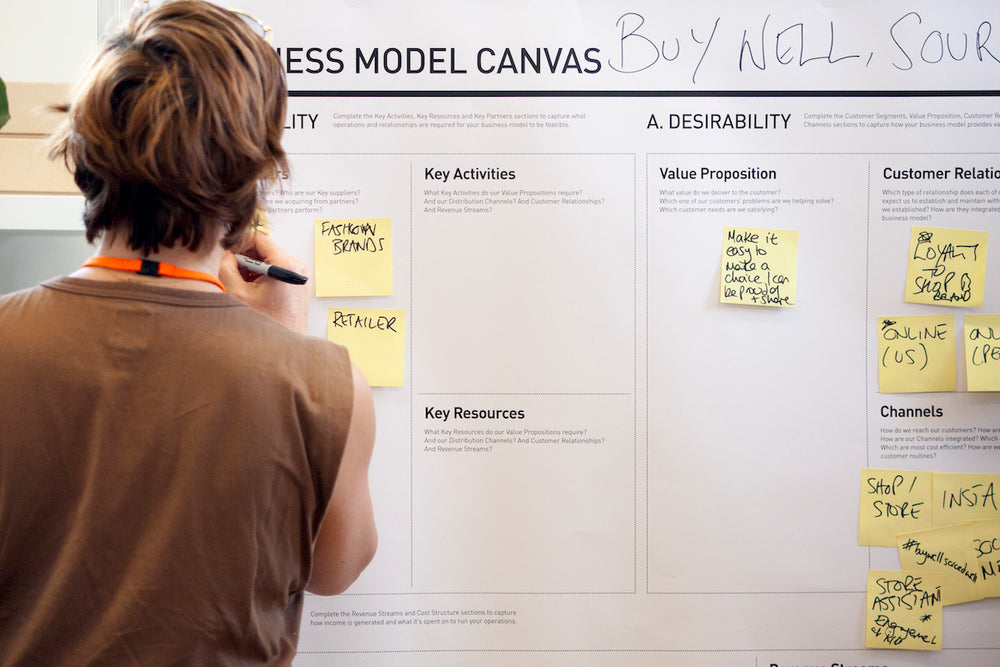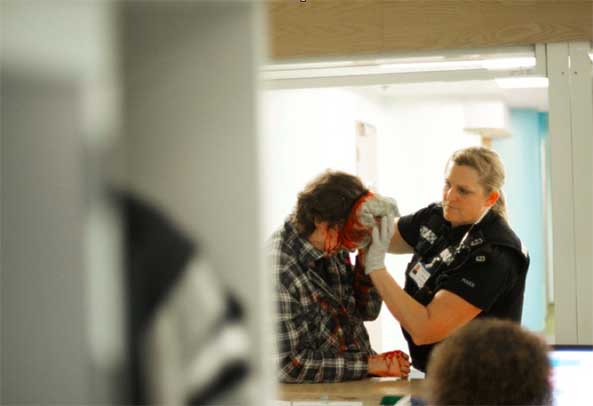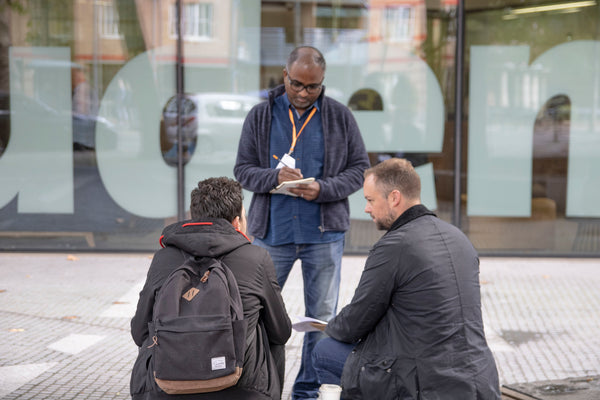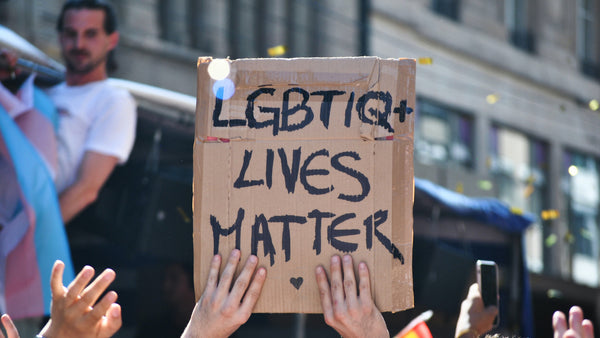How can design help fight taboos around violence and abuse in society? In this short read, Bas van Lier documents a Design Thinkers Academy Workshop at the Dutch conference What Design Can Do.
In this session the participants experienced how design thinking can be used to pose the right questions and find solutions to respond and tackle current issues in society.
Tackling complex issues like violence and aggression with fresh insights ‘People from the Public Prosecution Office were positively surprised about the willingness of designers to think with them about the issue of violence in society and what can be done about it,’ says Judith van Heems, who hosted the session on behalf of the Dutch government agency.
The workshop followed a student project in which the Dutch Public Prosecution Office teamed up with What Design Can Do and the Rietveld art and design academy in Amsterdam. Students of Rietveld’s DesignLab were asked to come up with ideas that could help lift taboos around the subject of domestic and other forms of societal violence. The thought provoking results of this student challenge were exhibited in the atrium of the venue.

Silence around violence
With the cooperation of the Design Thinkers Academy, a workshop was developed to engage designers to work with experts on how to help fight taboos around violence and abuse in society. There is a lot of silence around such topics as child abuse – 119,000 victims each year in the Netherlands –, elder abuse, violence by higher educated people or alcohol-induced violence.
The session was led and open by David Kester, who runs the Design Thinkers Academy London and moderates the WDCD conference. David talked through a project he led in 2011 as director of UK’s Design Council, in which designers worked on ways to reduce violence and aggression in accident and emergency departments of hospitals.
With 150 incidents of violence a day in hospitals in the UK the NHS lost a least 69 million pound per year. Working in partnership with the Department of Health, the Design Council ran a UK-wide open innovation project aimed at tackling this issue. Fresh insights came from ethnographic research led by Design Thinkers Academy coaches, Becky Rowe and Tina Basi.
The multidisciplinary team developed ideas for new communication systems, staff training and secure spaces and made a toolkit for the implementation.

Design thinking
David gave a short introduction to the principles of design thinking and handed over to Tim Schuurman, co-founder of Designthinkers Academy presented a short introduction on the value and methodology of design thinking for societal issues like the one at hand in this breakout session. Schuurman then led the workshop in which the participants were asked to use the Designthinkers methodology to determine the direction of a solution for issues like modern slavery (including child labour), family safety, LGBT aggression in schools, or making people who witness violence to act and help.
Participants experienced how design thinking is much about posing the right questions, as guidance for the design research from which solutions can evolve. One and a half hour is too short to find really new and innovating answers to such heavy issues like street violence and family abuse.

Combined thinking power
We caught up with Judith van Heems: "These are no minor issues and for us at the Prosecution Office. For our people, who are working with these issues on a daily basis in actual cases it is refreshing to discuss with others the more fundamental underlying societal issues. It is very educational to see what you can attain through combined thinking power."
Van Heems and her colleague Machteld van Barchjansen are now discussing how to apply design to continue these design developments and build on the cooperation with WDCD and Rietveld Academy.
Van Heemst: "It is gratifying to see that people from the Prosecution Office would like to give the project a sequel. There were also some ideas about bringing the student’s installations to the buildings of the Prosecution Office."

All photos by Leo Veger
WDCD Live 2016 took place in Amsterdam on 30 June and 1 July 201 at the Muziekgebouw aan ’t IJ.
